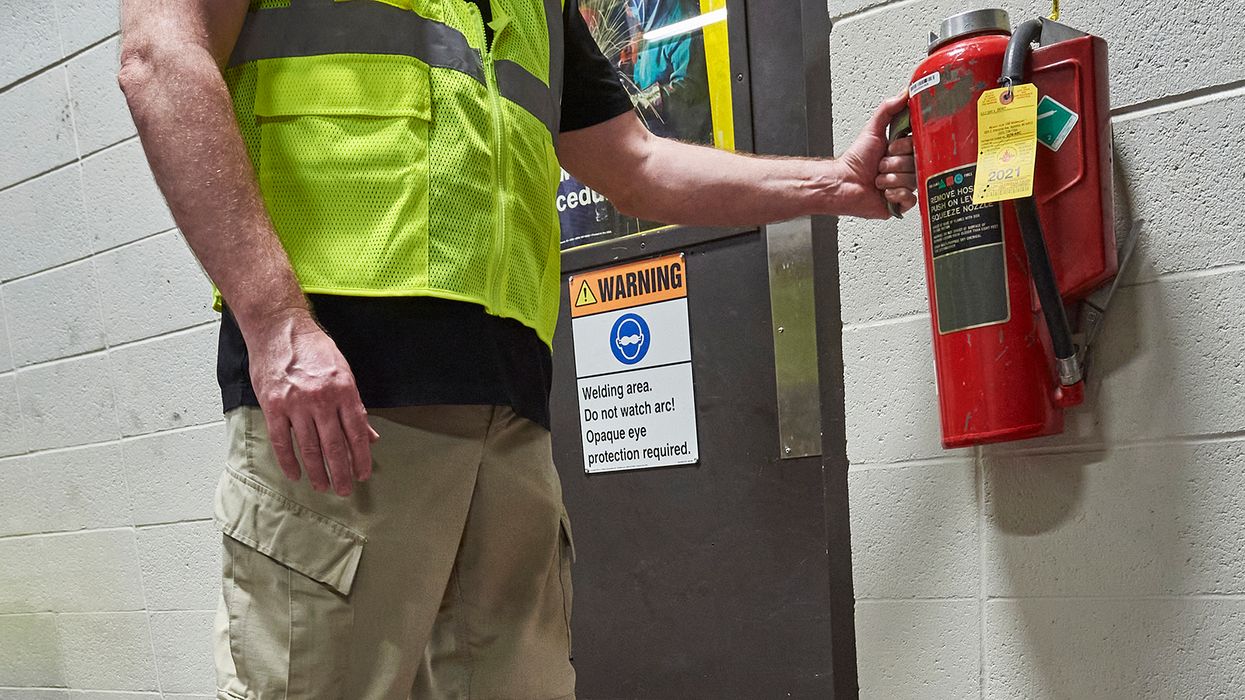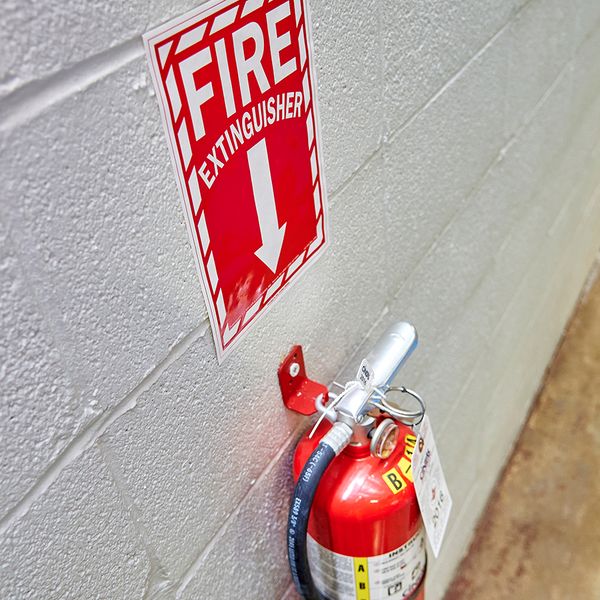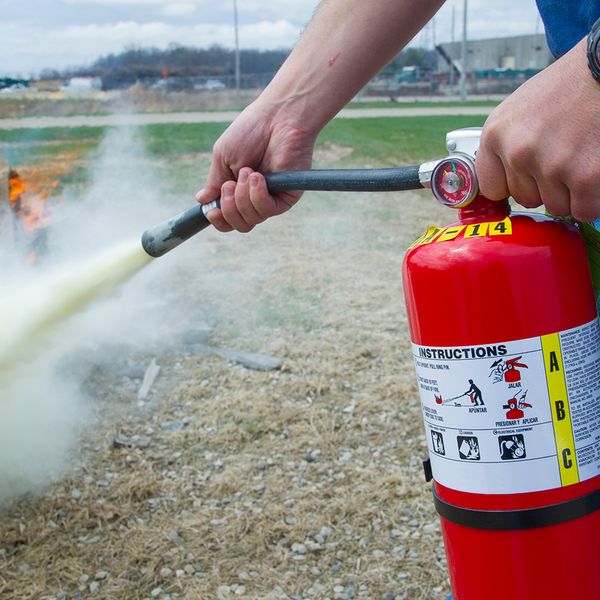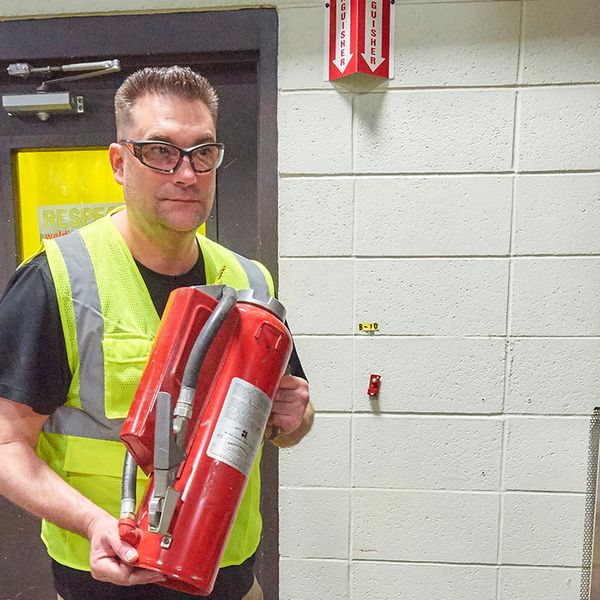Are your fire extinguisher inspections creating a hazard?
There’s a right way to inspect portable fire extinguishers and a wrong way. The wrong way can create serious hazards in the workplace! Although OSHA 1910.157(e) requires employers to visually inspect portable fire extinguishers monthly, the agency doesn’t specify what the inspections entail. A proper inspection is more than just making sure it’s mounted and shows a charge on the gauge.
Minimum OSHA inspection requirements
OSHA requires the following for portable fire extinguisher inspection, maintenance, and testing:
- Shall be visually inspected monthly,
- Shall be subjected to an annual maintenance check that is documented,
- Shall be replaced with alternative and equal protection when the extinguisher is removed for service, and
- (Dry chemical extinguishers) require a 12-year hydrostatic test and subjected to applicable maintenance procedures every 6 years.
Visually inspecting a portable fire extinguisher
Proper inspections ensure fire extinguishers are operable when they are needed most. Here are the steps for performing a thorough visual inspection of a portable fire extinguisher:
- When approaching the fire extinguisher, note how far away it is and whether access to it is blocked. Paragraph (d)(2) of 1910.157 requires employees have access to a fire extinguisher within 75 feet of travel. The National Fire Protection Association (NFPA) requires a minimum of 36 inches of clearance around a fire extinguisher and prohibits the extinguishers from being used as clothing or equipment storage racks.
- Observe fire extinguisher labeling. This requires two steps. First, is the wall, pillar, or ceiling labeled to identify the location of the extinguisher as required by 1910.157(c)(1)? Second, does the label on the fire extinguisher show it’s approved by a nationally recognized testing laboratory as per 1910.157(c)(2)?
- Verify the fire extinguisher is the correct type for the fire that may be encountered. Paragraph (d)(1) of 1910.157 requires portable fire extinguishers be selected and positioned based on the potential type and size of the fire that could occur.
- Confirm the fire extinguisher is mounted properly. To prevent movement or damage, OSHA recommends mounting fire extinguishers on brackets or in wall cabinets with their carrying handles placed 3-1/2 to 5 feet above the floor, depending on the type of extinguisher. Extinguishers less than 40 pounds gross weight should be mounted with their carrying handles no higher than 5 feet from the floor for an easy reach. Extinguishers over 40 pounds need to be mounted at lower heights, with their carrying handles no more than 3-1/2 feet from the floor. All hand-portable fire extinguishers need to have at least 4 inches of clearance between their bottoms and the floor to prevent damage and corrosion.
- Make sure the seal of the fire extinguisher hasn’t been broken and the pin is in place. The seal is typically a zip tie or similar device. If this is broken, or if the pin is missing or damaged, the fire extinguisher should be removed from service.
- Ensure there’s no damage or corrosion to the fire extinguisher shell. There should be no dents, dings, punctures, corrosion, or excess debris or chemical buildup on the fire extinguisher.
- Lift the extinguisher to ensure it’s full. Simply lift it off the mount to assess.
- Check the pressure gauge. A fire extinguisher with a gauge outside of the “green” zone is either overcharged or needs to be recharged and should be taken out of service.
- Carefully inspect each component of the fire extinguisher. Moving from top to bottom, carefully check the handle, pin, hose, gauge and glass, hose, and nozzle for corrosion, damage, or other defects. There should be no cracks or kinks in the hose, or obstructions in the end of the hose. Ensure the label on the fire extinguisher is clear and legible.
- Verify there’s an inspection tag for the annual maintenance inspection, and it’s up to date.
Once the inspection is completed, the process still has a few steps. If an extinguisher checks out as safe and operable, note the inspection date on the inspection tag. If any fire extinguisher fails an inspection, remove it from service and immediately replace it with an appropriate extinguisher for the class of fire that may be encountered.
Prohibited fire extinguishers
Yes, there are portable fire extinguishers that are prohibited for use in the workplace. OSHA considers the following extinguishers to be dangerous:
- Any extinguisher with a copper or brass shell that’s joined by softer solders or rivets.
- Any extinguisher requiring a cartridge rupture by turning it upside down first, or that requires an uncontrollable start using a chemical reaction to expel the extinguishing agent.
- Any extinguisher using Halon 1011 or carbon tetrachloride as an extinguishing agent.
Keys to remember
Portable fire extinguisher inspections may be a matter of life or death at some point. Ensuring safe and effective operation when needed requires diligent and thorough fire extinguisher inspections. Inspections should take in the whole picture rather than simply seeing they are mounted, not blocked, and have pressure on the gauge.


















































